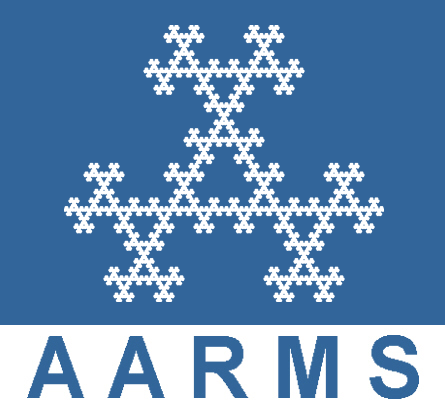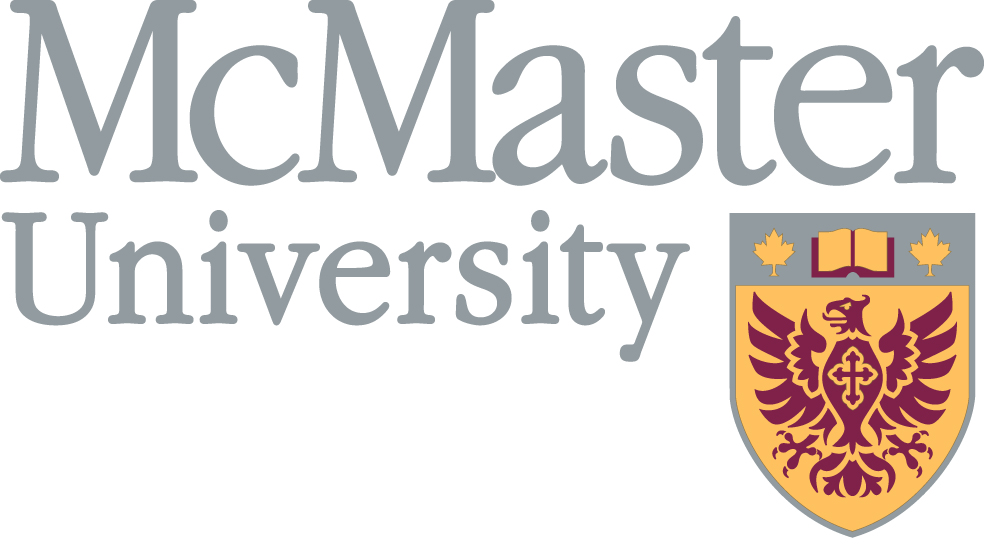Réunion d'hiver SMC 2016
Niagara Falls, 2 - 5 décembre 2016
Org: Adam Clay (University of Manitoba) et Ying Hu (UQÀM)
[PDF]
- SUBHADIP CHOWDHURY, The University of Chicago
A Topological Approach to a Formal Language theory problem [PDF]
-
In this talk, we will discuss a topological approach towards answering whether the group (language) $O_k$ is generated by a Multiple Context Free Grammar. The problem, when phrased group theoretically, is essentially a question about knots and configuration spaces.
- TYRONE GHASWALA, University of Waterloo
Cyclic Branched Covers of the Sphere and the Liftable Mapping Class Group [PDF]
-
Given a (possibly branched) covering space between surfaces, we can ask the following question: Which elements of the mapping class group of the base space have representatives that lift to homeomorphisms of the total space? Birman and Hilden first considered this question in the case of the 2-sheeted cover of the sphere where the deck group is generated by a fixed hyperelliptic involution. In this case, they answered the question above with a resounding "everything lifts"! In this talk we will answer the same question for other families of cyclic branched covers over the sphere, and correct an error of Birman and Hilden.
This is joint work with Rebecca Winarski.
- DIANA HUBBARD, University of Michigan
On the annular refinement of Khovanov homology [PDF]
-
In 2006, Plamenevskaya proved that the homology class of a distinguished element in Khovanov homology is an invariant of transverse links. In this talk I will define an annular refinement of this element, kappa. Kappa is a conjugacy class invariant of braids. We will see applications of kappa relating to transverse links, properties of braids, and the word problem in the braid group. This work is joint with Adam Saltz.
- KASIA JANKIEWICZ, McGill University
Graph coloring problem and fibering right angled Coxeter groups. [PDF]
-
This is a joint work with Sergey Norin and Daniel Wise. I will describe a simple graph coloring problem. Its solution, if exists, provides a virtual algebraic fibration of the right angled Coxeter group associated to the graph.
- WILL KAZEZ, University of Georgia
Tautness of foliations [PDF]
-
I will give a brief overview of the role tautness plays in the study of foliations of 3-manifolds. Elementary examples will be constructed to show that notions of tautness that are equivalent for fairly smooth foliations are not equivalent in the world of less smooth foliations. These examples of "phantom tori” have implications in the study of approximations of taut foliations by contact structures. This is joint work with Rachel Roberts.
- CHRISTINE LEE, University of Texas at Austin
A trivial tail homology for non A-adequate links. [PDF]
-
For semi-adequate links, the non-zero coefficients of the colored Jones polynomial are known to stabilize and give geometric information on the knot complement. The power series formed by collecting these stable coefficients is called the \emph{tail} of the polynomial. Rozansky has extended this result to the categorification of the colored Jones polynomial by constructing a tail homology whose Euler characteristic gives a tail of the colored Jones polynomial of all links. For non semi-adequate links, he conjectures that this tail is trivial. In this talk, I will discuss the proof of this statement and discuss its relation to a larger conjecture concerning link homologies.
- TAO LI, Boston College
Heegaard genus and degree-one map [PDF]
-
We explore some relation between Heegaard splittings and certain degree-one maps. We also discuss an application on tunnel numbers of satellite knots.
- ADAM LOWRANCE, Vassar College
The Jones polynomial of almost alternating and Turaev genus one links [PDF]
-
A link is almost alternating if it is non-alternating and has a diagram where one crossing change transforms the diagram into an alternating diagram. The Turaev surface of a link diagram is a Heegaard surface on which the link has an alternating projection. It is constructed from a certain cobordism between the all-A and all-B Kauffman states of the diagram. The Turaev genus of a link is the minimum genus of the Turaev surface of any diagram. In this talk, we show that the Jones polynomial of an almost alternating or a Turaev genus one link has either leading or trailing coefficient of plus or minus one.
- SARAH MOUSLEY, University of Illinois at Urbana-Champaign
Boundary Maps [PDF]
-
There are natural embeddings of right-angled Artin groups $G$ into the mapping class group Mod$(S)$ of a surface $S$. The groups $G$ and Mod$(S)$ can each be equipped with a geometric structure called a hierarchically hyperbolic space (HHS) structure. Durham, Hagen, and Sisto developed a notion of a boundary for such spaces. In this talk, we will explore the following question: does an embedding $\phi: G \rightarrow \text{Mod}(S)$ extend continuously to a boundary map $\partial G \rightarrow \partial \text{Mod}(S)$? That is, given two sequences $(g_n)$ and $(h_n)$ in $G$ that limit to the same point in $\partial G$, do $(\phi(g_n))$ and $(\phi(h_n))$ limit to the same point in $\partial \text{Mod}(S)$?
No background in HHS structures is needed.
- ADAM SIKORA, SUNY Buffalo
On algebraic proprties of skein algebras of surfaces [PDF]
-
For a surface $F$, the space of links in $F \times [0, 1]$ modulo the Kauffman bracket skein relations is called the skein algebra of $F$, denoted by $S(F).$ It is a non-commutative deformation of the $SL(2, \mathbb C)$-character variety of $F$, of significant importance to quantum topology. In particular, for $F$ with boundary, it is (almost) the quantum Teichmuller space of $F$. We are going to the explore zero divisors in skein algebras and their centers.
- ZORAN SUNIC, Texas A\&M University
Left Relatively Convex Subgroups [PDF]
-
Let $G$ be a group and $H$ be a subgroup of $G$. We say that $H$ is left relatively convex in $G$ if the left $G$-set $G/H$ has at least one $G$-invariant order. When $G$ is left orderable, this holds if and only if $H$ is convex in $G$ under some left ordering of $G$.
We give a criterion for $H$ to be left relatively convex in $G$ that generalizes a well known criterion of Burns and Hale. We then use this criterion to show that all maximal cyclic subgroups are left relatively convex in free groups, in right-angled Artin groups, and in surface groups that are not the Klein-bottle group. The free-group case extends a result of Duncan and Howie. We show that if $G$ is left orderable, then each free factor of $G$ is left relatively convex in $G$. More generally, for any graph of groups, if each edge group is left relatively convex in each of its vertex groups, then each vertex group is left relatively convex in the fundamental group; this generalizes a result of Chiswell. Finally, we show that all maximal cyclic subgroups in locally residually torsion-free nilpotent groups are left relatively convex.
This is a joint work with Yago Antolin and Warren Dicks.
- NICHOLAS VLAMIS, University of Michigan
Graphs of curves on infinite-type surfaces [PDF]
-
The curve graph of an infinite-type surface has diameter 2, and as such it is not interesting from the perspective of coarse geometry. We study when the mapping class group of an infinite-type surface $S$ admits an action with unbounded orbits on a connected graph whose vertices are simple closed curves on $S$. We introduce a topological invariant for infinite-type surfaces that determines in many cases whether there is such an action. This is joint work with Matthew Durham and Federica Fanoni.
- DANI WISE, McGill
Virtual Limit Groups [PDF]
-
I will describe a family of groups that have a finite index subgroup which is a limit group.
The family includes every word-hyperbolic group that splits as a free
product of two free groups amalgamating a cyclic subgroup.





